It’s not easy to believe that long ago, instead of the lush green Lessinia Regional Park we see today, the area was covered with a warm sea rich in tropical flora and fauna.Today, the 100 kilometer square protected area is an eco and adventure travelers’ dream with tons of adventure activities available all year long. With everything from Nordic walking to paragliding in summer and snowshoeing to kite snowboarding in the winter, it can be hard to chose what to see and do! Here are a few highlights not to be missed when visiting Lessinia Regional Park in the summer:
Sant’Anna d’Alfaedo Museum
A drive up the steep slopes of the pre-Alps brought us to Sant’Anna d’Alfaedo, where the Museo Paleontoglogico e Preistorio helped us to discover how 50 million years ago this area was covered in a big sea rich in many fish and plants. The building itself is built out of stone from the area and is divided into two parts. The first part is devoted to geology of the territory, to explanations of the stratigraphys of the local caves, and to the exhibition of a series of fossils of exceptional value, among them a shark more than six meters long and a sea turtle, reptiles, ammonites, and echinoderms. The second part is devoted to local prehistory, rich of findings of incredible value, such as those of the cave of Fumane, including a 35,000 year old cave drawing and Roman coins intricate with detail.
Ponte di Veja
Nearby is the Ponte di Veja, the largest natural bridge in Europe at 50 meters high. The bridge is the result of natural formation of the cavern. In the beginning there was a cavern of karstic origin. The structure of the cavern was represented by a sort of architrave formed by the bridge with soluble calcareous rock below. The waters of the torrents passed over the bridge, forming a waterfall. With the passing of time the sinkholes were formed bringing the waters inside the cavern, this fact led to the digging, the most soluble part leaving only the arch in red ammonitic limestone. According to a popular legend, Dante Alighieri, exiled in Verona and the guest of Cangrande della Scala, was inspired by the bridge for the description of Malebolge.
Studies and excavations began in 1932 of the caves surrounding the bridge. Estimates of human presence are based on the Upper Paleolithic and date back 100,000 years with the area populated until about 10,000 years ago, a period of probable loss of the extracting of flints for the appearance of metal in sufficient quantity for the first articles made with flint. Residents near the bridge had to be skilled craftsmen at work building the flint arrows, needles, and pins.
Stop by the Trattoria Ponte di Veja after exploring the bridge and surrounding area. The menu includes several specialties with tartufo nero (black truffles) from the park.
Molina Waterfalls
Molina is a Medieval village at the junction between three valleys in steep wooded mountainside. The village itself is charming. The old stone houses reflect the style of the western Lessinia, and its botanical museum in the main square has a fine exhibition of local flora. Located below the village, is the Parco delle Cascate (Waterfalls Park), the main attraction of the village.
The final immersion of the Lessini region took place during the Tertiary era, 25 – 30 million years ago, and the rocks in this area, since the moment of their sub-aerial exposition, were subjected to the action of atmospheric agents which caused their modification and fragmentation. The waterfalls were originated along the rivers because of the presence of rocks with different levels of erodibility. The clayey waterproff layers of Biancone limestone prevent meteoric water from filtering under the ground and thus caused the creation of springs.
From the village, follow the path to the park entrance, which about a 10 minute walk. And if you think the path to the entrance is steep and strenuous, turn back! Once inside the park, there are three different trails. The first is the easy trail and takes you to the grotto and Cascata Nero.
The red path (medium difficulty) passes by all but the panoramic viewpoint, the round well, and the Dark-breasts cave. The black path is the most difficult and passes along all points, with several very steep uphill ascents. From either the red or black paths, be sure to zip along the cableway across the Cascata del Tombolino and the bravest can swing right into the Cascata Nera.
Know Before You Go
- The Sant’Anna d’Alfaedo Museum is open from May 15 – September 14 on Wednesdays, Saturdays, Sundays and holidays from 10am -12pm and 3pm – 5pm. From September 15 – May 14, it is open Saturdays and Sundays only from 9.30am -12.30pm and 3:30pm – 6:30pm.
- The Sant’Anna d’Alfaedo Museum is located in Piazza Dalla Bona in Sant’Anna d’Alfaedo (A on the Google Map below)
- Trattoria Ponte dei Veja is open daily in the summer. Closed Tuesdays the rest of the year. (B on the Google Map below)
- Parco delle Cascate is open April 1 – September 30 daily from 9am – 7:30pm; open March and October on holidays from 10am – 6pm; closed November 1 – February 28.
- Entrance to Parco delle Cascate is €5 for adults, €3 for children 6 – 11 years old, and free for children under 6. Dogs are permitted on a leash. (C on the Google Map below.)
View Larger Map
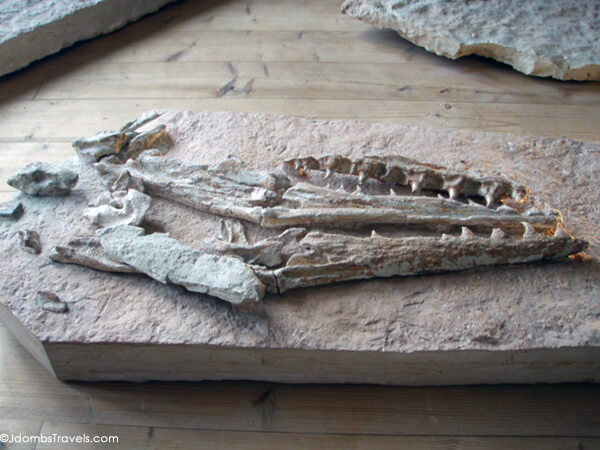
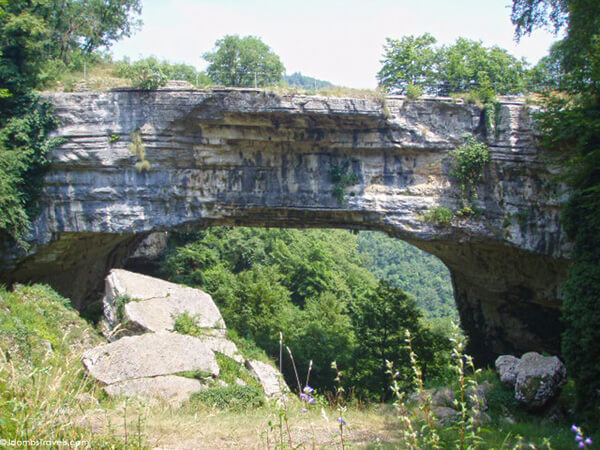
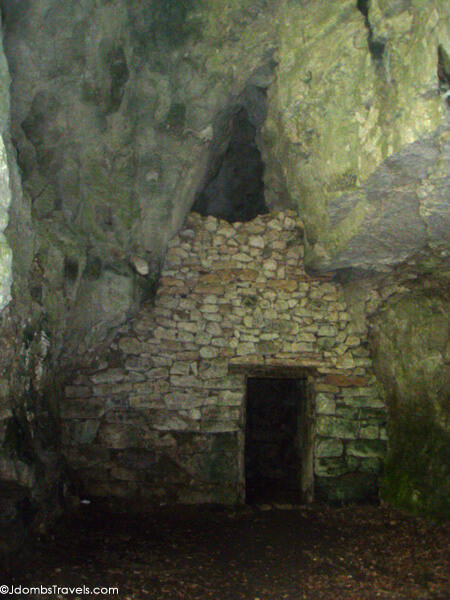
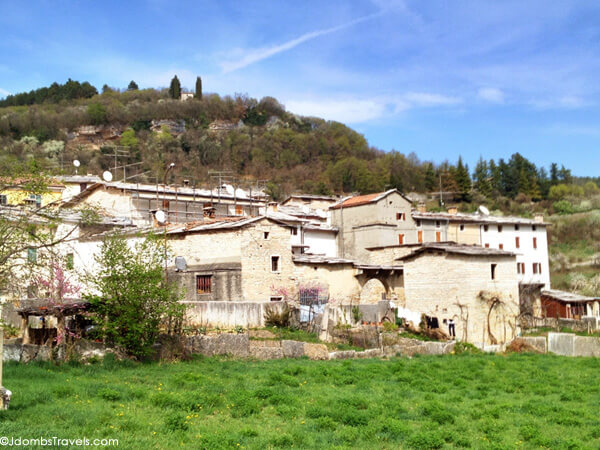
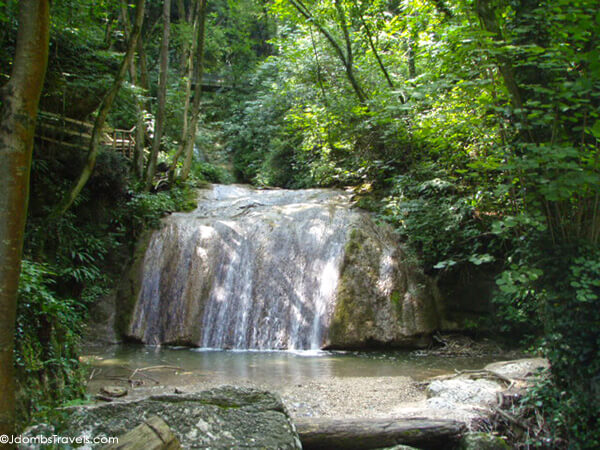

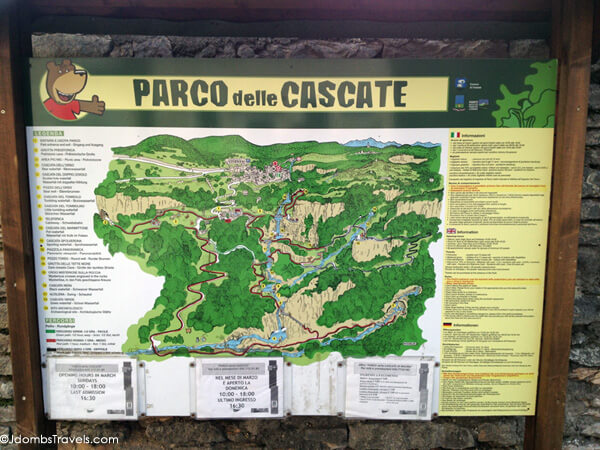
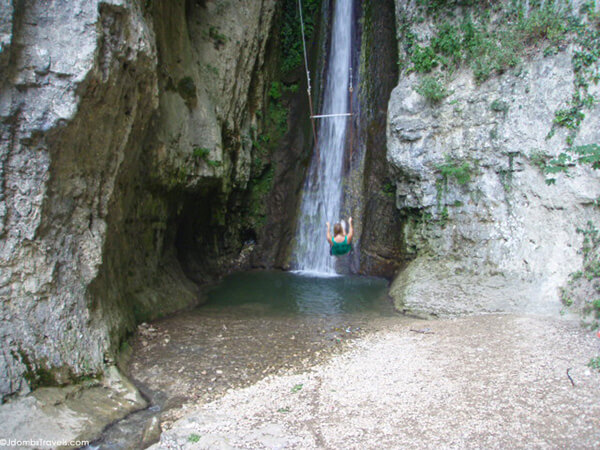
Stephanie Romero says
This looks like so much fun!
Jennifer says
Definitely a lot of fun! It's a great area to discover the eco and adventure activities Italy has to offer!
Kenin Bassart says
Looks like an awesome time, nice post!
Stef says
What a beautiful spot! I made it to the other side of Lago di Garda and Verona already but unfortunately not to this Nature park.
Jennifer Dombrowski says
Cool! We don’t hear from many people that have explored more off-the-beaten-path parts of Italy like Lake Garda!
Andrea says
The swing looks awsome!!
Jennifer Dombrowski says
Right?! Who doesn’t want to swing into a waterfall?
Jennifer says
Thanks Kenin! It’s a really great area that we’d like to discover even more of!
noel says
What a gorgeous area, and swing looks like something I would try along with some fabulous dish with black truffles….where’s the image of the dishes?
Jennifer Dombrowski says
I was a bad blogger that day and didn’t photograph my food. 🙁